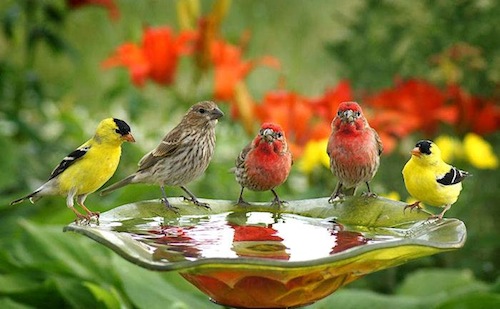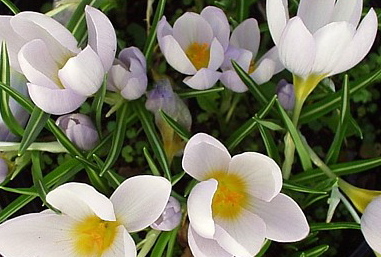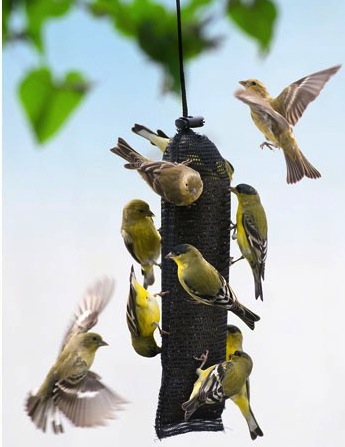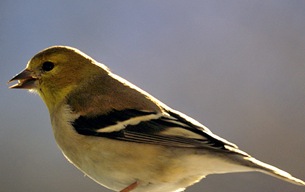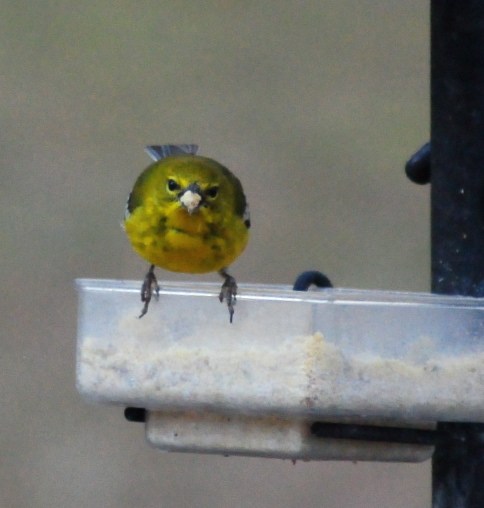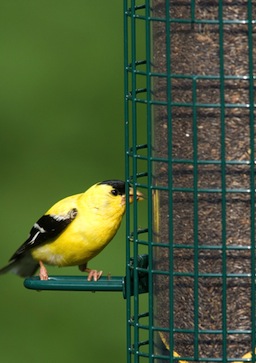-
Why Place Finch Feeders Near a Bird Bath?
Photo courtesy of Evolve Campaigns Fresh water is known to entice more feathered friends than any single feeder or birdhouse. One of the critical elements for just about any life form, birds require fresh water, even in the harshest winter weather. Sure they can eat snow, but it takes work to convert the snow into water and uses precious calories needed to stay warm. That’s why heated baths and de-icers are so popular among dedicated backyard birders-especially this past winter, no… make that this persistent winter!
With the first bulbs forcing through, it
means spring’s around the corner… even if there’s still snow on the ground in your neck of the woods! The calendar and number of hours of daylight are signaling birds it’s time for nesting, to claim a spot, settle down and raise their broods. Although American goldfinches and house finches don’t use natural cavities (or birdhouses) for nesting, you can absolutely attract these cool little fliers to your place with finch feeders and a fresh water source.
Goldfinches can be seen chowing down on straight nyjer or thistle seed (their preferred meal), as well as finch mixes containing finely chopped sunflower hearts and thistle. The latter being more likely to attract a wider variety of species. House and purple finches, cardinals, pine siskins, towhees and several types of sparrows are commonly seen visiting finch feeders.
The timid demeanor of the vibrant yellow goldfinch keeps them from competing at feeders among crowds. They’d actually prefer to just give up and fly off than to fight for a chance to eat. This not very characteristic of too many birds!
A great way to offer extra feeding space during the busy finch season (without buying several full-blown feeders) is to offer thistle socks. Convenient and inexpensive, these smaller mesh feeders provide several birds a good meal instead of a missed opportunity!
One of very few birds who molts twice per year, their electric yellow breeding plumage has started developing. When all other birds are just about through with nesting for the season, goldfinches are just getting started! Their busy season? Late June through July.
Though they might not be sporting that amazing yellow color, goldfinches are still around. Keep thistle and finch feeders out year-round for best results, to see more of these delightful feathered friends at your place!
-
Got Your Nyjer Feeder Ready?
Goldfinches are back in droves.. but they’re not quite so gold yet. Still sporting drab winter plumage, it’s not until late spring/early summer when they’ll molt again. It’s the process of shedding old worn feathers to make way for new ones, and goldfinches happen to be one of very few birds who molt twice per year.
If your nyjer feeder has been sitting for a while sans activity, the older seed may be moldy, and finches won’t eat it. Consider trashing that old seed, giving the feeder a good cleaning and refilling with fresh goods. Doing this provides a welcome sign for these cool little birds.
One of the larger capacity feeders is shown here – holding 5+ lbs. of seed. A relative of the Rainbow Finch Feeder, the Super version is even better for large finch crowds. With colorful perches and a great design, this nyjer feeder lets you fill from both the top and bottom. This eliminates stale seed piling up at the bottom. By alternating which end is filled with fresh seed, there’s never a build-up of old stuff.
There’s another bird out there now who might easily be confused with the goldfinch. About the same size, but very opposite behavior, warblers can be pretty territorial around bird feeders. Males will fight and fend off others, doing this sort of vertical flight dance where the birds look almost intertwined. Goldfinches on the other hand would rather find another feeder than fight.
This is when an extra thistle sock or two come in very handy. Inexpensive and simple to use, they offer extra feeding spots during goldfinches’ busy breeding season. Oh and this warbler… he’s got a mouthful of suet and a big attitude too!
To roll out the welcome mat for finches and other songbirds, offer a consistent fresh water source and keep bird feeders clean. Adding some nesting materials in early spring will also encourage residency at your place!
-
not another nyjer feeder post?
Well yes actually! Because goldfinches are the birds with the latest nesting season, and because we saw this cool post over at 10,000 Birds, something on nyjer feeders seemed appropriate.
One of the sweetest little resident songbirds, they’ll stick around your place if a consistent food and water source is provided. Although they may not be as pretty in winter, their song remains the same.
The article we found interesting was on the Winter Finch Forecast and conveyed some great info on the why, when and where of several species of finches. Did you know crossbills and grosbeaks were part of the finch family? We didn’t!
For some great photos and worthy information, check out the article here

